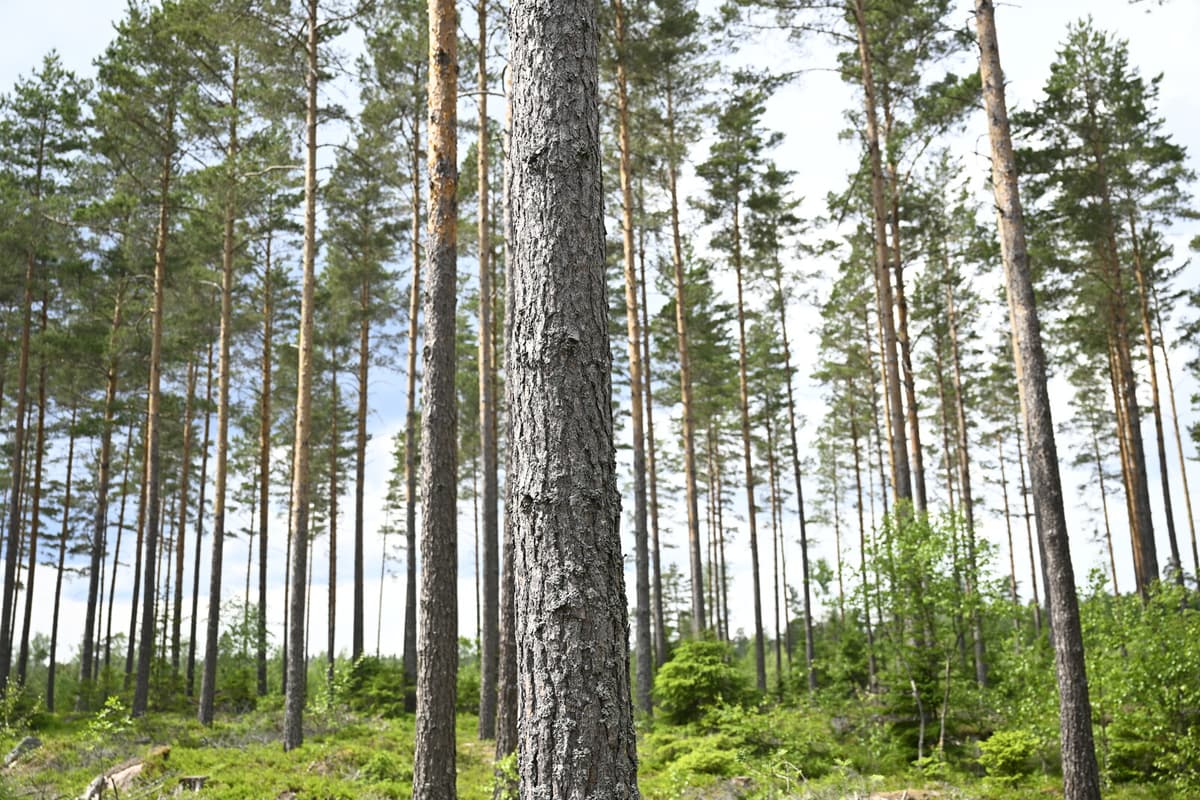Swedish forestry industry needs clearer rules and goals, according to the investigator Göran Örlander who has now handed over the entire forest investigation to the government.
His conclusions are that the Swedish forest industry has lost competitiveness and globally, among other things, because the regulatory framework for forest owners is unclear and unpredictable. There are rules that unnecessarily limit the possibility of growth in the forest. Among other things, the investigator wants to see more permissive rules for the cultivation of, among other things, foreign tree species.
New methods
We have relatively few tree species in Swedish forestry today, and they are challenged by a changed and warmer climate, something that is particularly relevant in southern Sweden. By facilitating new methods for planting trees and new tree species, the forest can continue to be viable, says Örlander.
The introduction of new tree species must be done cautiously so that they do not have a negative impact on the environment. This is because there are risks that species become invasive, he points out.
Another proposal is about moving the responsibility for granting exemptions for species protection issues from the county administrative boards to the Forest Agency.
It becomes a more efficient process for one authority to have the responsibility. It is the Forest Agency that forest owners have contact with, and we believe that they have the competence, says Göran Örlander.
Favors large owners
The Green party's spokesperson Amanda Lind is very critical. She believes that the investigator misses the sustainability perspective for Swedish forests.
These proposals are very ominous. The investigation leads Swedish forest policy away from climate and environment to favor short-term interests for the forest industry, she says.
The criticism also applies to proposals to make it easier to revoke nature reserves.
We want forestry to be converted to more gentle forestry methods, that we ensure that the forest can grow a little longer so that it can better store carbon dioxide.
Even the World Wildlife Fund (WWF) is critical and believes that large forest companies are short-term favored.
Deregulation, classification of clear-cutting as "ordinary forestry" combined with encouragement of intensive forestry measures means that biological and social values are down-prioritized, says Peter Roberntz, WWF's forest expert.
At the industry organization Skogsindustrierna, they are instead positive about the investigator's proposals. The Swedish Federation of Farmers (LRF) also gives a thumbs up.
More research
The investigator wants to see increased investments in research on the forest as well as more resources for the Forest Agency's advisory services to landowners.
We see that the advisory resources to the Forest Agency have decreased significantly and that research related to, among other things, forest regeneration has difficulty with funding.
Petra Hedbom/TT
Facts: Forest investigation
TT
Some proposals for regulatory easing include: Increased opportunities to use better plant material. Increased opportunities to use foreign tree species. Increased opportunities to fertilize the forest. Examples of proposals that concern increased knowledge include: Major investment in advisory services to landowners through the Forest Agency Investment in increased research on forest production Ensuring an evidence-based approach in the authorities that work with follow-up and evaluation.
Examples of proposals that concern follow-up: Proposal for development of the environmental goal system Better follow-up of the production goal. New way to report climate benefits that includes the value of products.
Source: Investigator Göran Örlander






